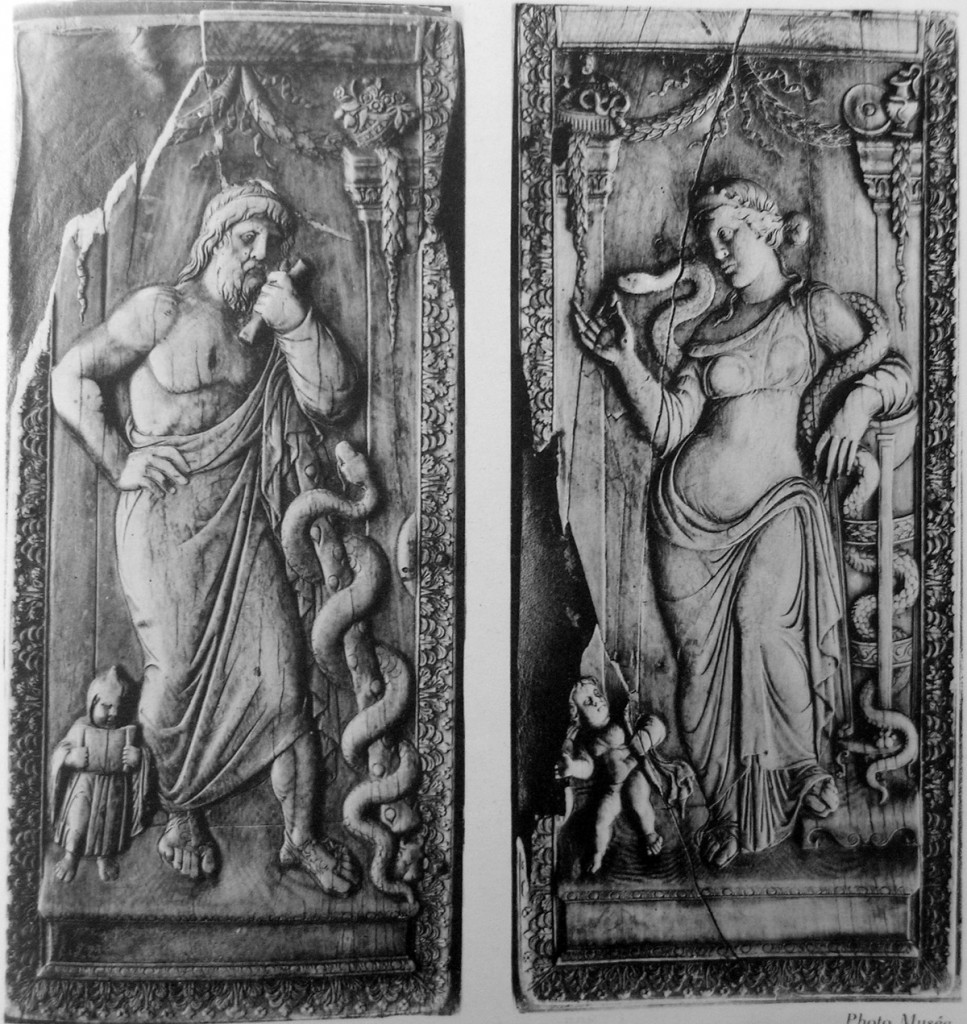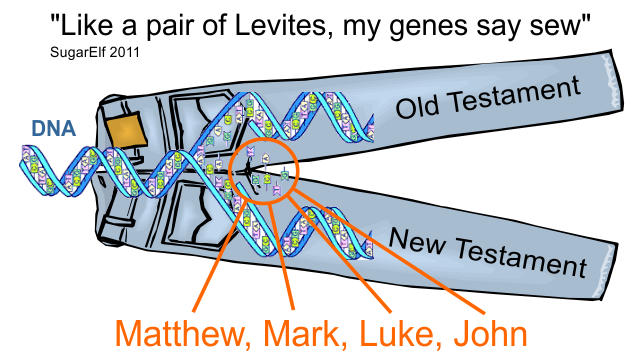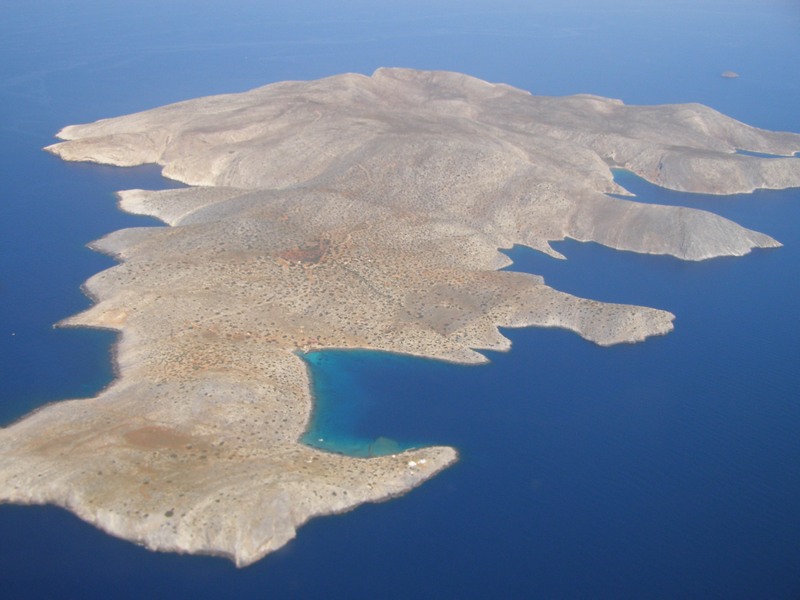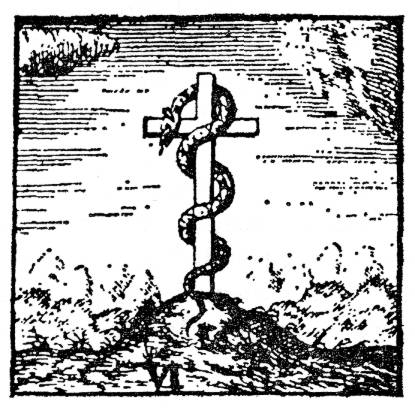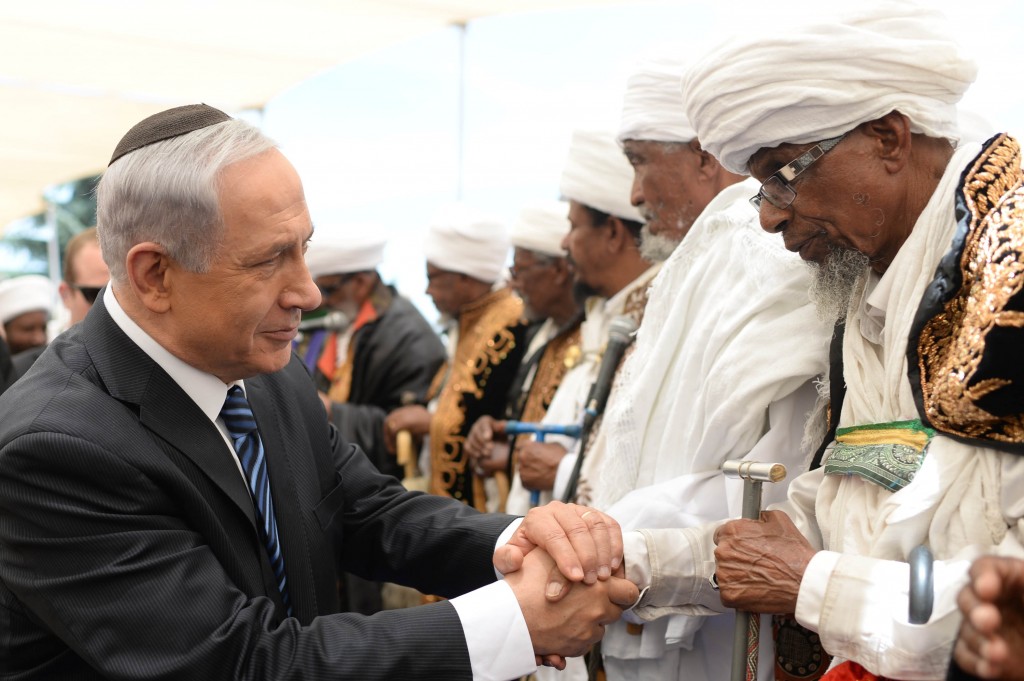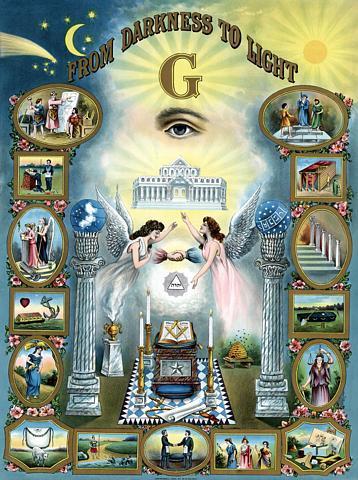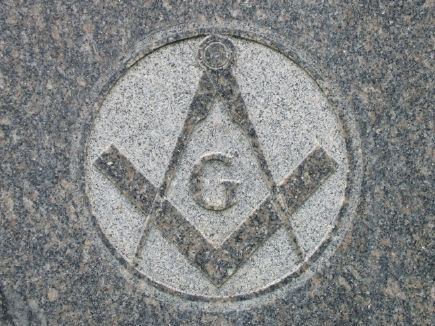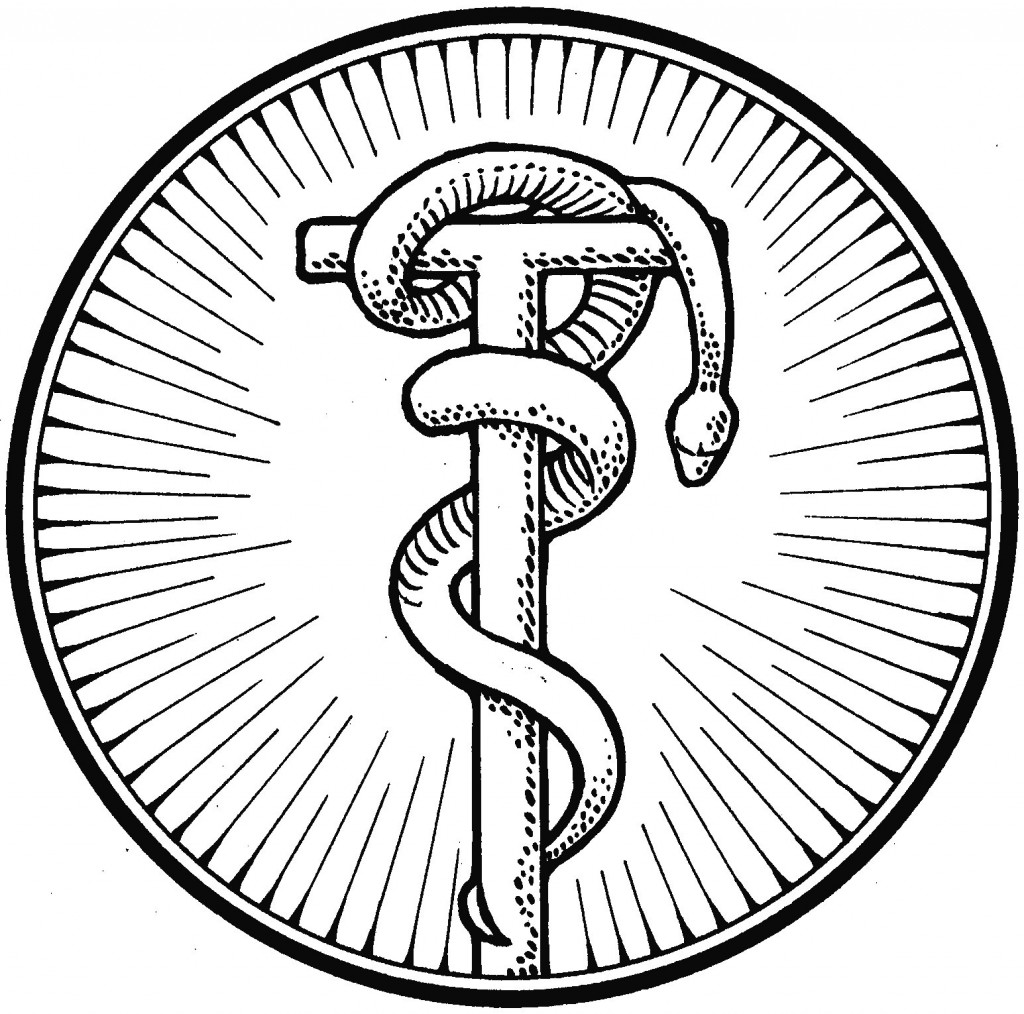The people from the ancient island that was once known as Kos, (Cos, Coos, Ceus, Zia etc) are 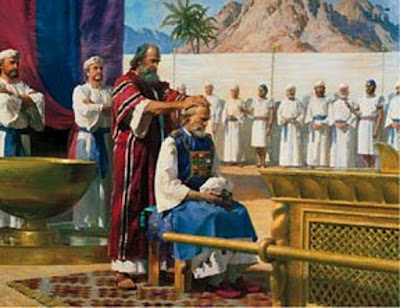 mentioned in the time of Alexander the Great as some of the most powerful people in the Mediterranean Sea. In fact, Alexander the Great’s personal physician named Critodemus was from this same island. They have been known over the course of history under various spellings such as the Koan, Coan, Cohen, Kohen or plural Kohanim (Hebrew: כֹּהֵן), which is a Hebrew word that simply means priest. In the bible they are referred to mainly as the Hivites and Levites.
mentioned in the time of Alexander the Great as some of the most powerful people in the Mediterranean Sea. In fact, Alexander the Great’s personal physician named Critodemus was from this same island. They have been known over the course of history under various spellings such as the Koan, Coan, Cohen, Kohen or plural Kohanim (Hebrew: כֹּהֵן), which is a Hebrew word that simply means priest. In the bible they are referred to mainly as the Hivites and Levites.
Many of the Gnostic Scholars today and ancient historians of yesteryear agree that most of the Gnostic sects that were around in the time of early Christianity had originated from or were the same as who we know in Hebrew as the Gnostic Hivite or Levites and Greek as the Gnostic Ophites. Hivite is derived from the Hebrew Hivim or Chivim, and signifies a serpent in the language of Syria. The names Hivi or Hivite, and Ephites, Evites later became the Levite or Levites and where the Greeks got their word “Ophites,” for the worshipers of the serpent. The names Ophite or Ophian comes from the Greek ophianoi (ὄφιανοι), from Greek ophis (ὄφις) meaning “
Madam Blavatsky in Isis Unveiled had written “It is probable that the fiery serpents or Seraphim mentioned in the twenty-first chapter of the book of Numbers were the same as the Levites, or Ophite tribe.” Blavatsky further writes, “The names Heva, Hivi or Hivite, and Levi all signify a serpent; and it is a curious fact that the Hivites, or serpent-tribe of Palestine, like the Levites or Ophites of Israel, were ministers to the temples. They were a two-fold colony which came both from Egypt and Syria. The Syrian Cadmians colonized the islands above mentioned. The Egyptian adventurers settled first in Crete, and afterwards in the Cyclades, Peloponnesus, Greece, Samothrace, Macedonia, Illyrium, as we shall hereafter find.”
As Blavatsky had said above, the fiery serpents or Seraphim are the same as the Ophites and Levites and I explain in this book that they are also the same as the Sethians, Hivites, Curetes, Telchines and many other priesthoods. However what we can say is true today is that the last known names of this priesthood of Gnostics were the Kohanim Levites who settled on the island of Kos. Now known as Dia just seven miles across from Crete.
If we study the history I will present you with below of the Kohanim Levites, we can safely say that the Sons of Levi from Kos play a huge role in the early years of Gnosticism. In fact, they may be the main and most powerful Gnostic priesthood that we actually have a tremendous amount of history and archaeological evidence to corroborate my claims.
This is their true story…….
In ancient times it was said that a person who comes from the ancient island Kos (Coos, Ceus) is called a Koan in English, and a Cohen or Kohen (or Kohain; Hebrew: כֹּהֵן, “priest”, pl. כֹּהֲנִים Kohanim) which is simply the Hebrew word for priest, and a member of the biblical family of the Levites. These ancient people and families hat were specifically trained in medicine, healing and the arts from the island of Kos (now Dia) located just 7 miles offshore Crete.
The island of Kos has been known be several names over the last two thousand years. Names that I have found are, Cea (from Ceus or Ceos, the son of Titan), Cia, Zia, Cos, Coos, Cous(counted by Pliny’ among the Cos), Ceus, and Cean.(1) Other names would be Delos, Merope, Lemnos, Letos, Staunchio and Patmos. However today, the island of Kos is now known as Dia.
The ancient priestly family of the Kohanim Levites has produced some of the world’s most influential people who have ever graced the pages of history. Men who would influence all the arts such as Poets such as Simonides of Ceos, Prodicus of Ceos, and medicine men who were also comedians like Epicharmus, and pioneers in the field of medicine, such as the world-famous Father of Medicine, Hippocrates who was a Kohen born on the Island of Kos. Many men of literary talents were also born there. Soranus said that Hippocrates learned medicine from his father and grandfather, and studied other subjects with Democritus and Gorgias.
This learning from grandfather to father, and father to son would follow in the ancient Kohen family tradition. Pliny had written; Hippocrates learned medicine by writing down the successful cures that had been recorded by patients on the walls of Asklepios’s Kohen (Koan) temple. His sons Drakon, Thessalus, and son-in-law, Polybus, were Kohen trained doctors as well.
Kos is the very place where he had formed the world famous Hippocrates School of Medicine known that had lasted for many centuries; producing some of the earth’s best natural cures and also some of the most adept and sought out medicine men the world has ever seen. Health and medical procedures that are still used to this very day.
The 1st century geographer, Strabo was a native of Crete and he speaks of the Kohanim having erected a temple in honor of Asklepios (Æsculapius), the God of Healing and Medicine of the island of Kos. He said, “it was enriched with offerings and presents of great value, but the chief ornament of the place was a Venus rising out of the sea; done by the Kohen artist, Apelles, and reckoned one of his best performances. Apelles is esteemed as one of the greatest of Kohen painters who had ever lived.
Here is an image below of the God Asklepios with his single serpent entwined staff, and the Hygia who was the goddess of health (Greek: ὑγίεια – hugieia), cleanliness and sanitation. From her name we get the English word for cleanliness, hygiene.
This small island of Kos has a deep history, that many people are simply unaware of.
The island of Dia (Kos) was also known as a favorite retreat to Greco-Egyptian Kings from Egypt, and also the professors and students from the schools of Alexandria had often vacationed on what was once a small island retreat. Around the 1st century A.D., Kos would become a favorite place of exile for royal Cretans who were sent to the island of Kos if they had rebelled or were at odds with the governments on Crete. This is the island, where I believe St. John was imprisoned and that was known biblically as Patmos. It is also connected to the battle of Kos against the Macedonians in the events in the First Cretan War (ca. 205-201 B.C.), when the island was repeatedly attacked by the Macedonians from just seven miles across the sea on the island of Crete. Kos has also been called Istanköy by the Ottomans, and Coo or Dia by the Latins.
Kos was home to a large population of Jews that are mentioned at the time of Antiochus VII. During the Peloponnesian War, they were considered as one of the allies of Athens, but towards the end of the war, it was destroyed by invasions and an earthquake in 477 B.C. Soon thereafter, it was rebuilt to become even stronger as part of the Delian League.
Before the Kohanim were taken over or absorbed into Rome, they were well-known as an educated people who were in high demand around the world. Their arts and inventions were needed by various government officials, such as in Athens and Rhodes, so they would often travel and be hired to handle various tasks set forth by their employers. Examples of these Kohen would be Prodicus (Greek: Πρόδικος, Pródikos; c. 465 BC – c. 395 BC), a Greek philosopher, who was part of the first generation of Sophists who went toAthens as an ambassador from Dia 9Kos); he became well-known as a speaker and a teacher. There is Philitas (340 – 285 BC), who was a scholar and poet during the early Hellenistic period of ancient Greece, and in the second half of the 4th century BC was appointed tutor to the heir to the throne, Ptolemy I of Ptolemaic Egypt. In addition, another Kohen of Kos who left the island and made his influence in another country is Erasistratus of Kos, who was a Greek anatomist and royal physician under Seleucus I Nicator of Syria.
Kos would also be the birthplace to Pharaohs such as the Greco-Egyptian, Ptolemy II. It also had produced many men of literary talents, like the poets Simonides of Kos (Cos or Ceos) and Prodicus of Kos (Cos or Ceos). Along with medicine men who also had a sense of humor like the comedian, Epicharmus. All of them being from the Kohanim priesthood from the Island of Kos (Dia).
The Ptolemies of the Greco Egyptian period had continued the ancient tradition of the high priests were connected to the islands of Kos and Crete, which was part of the Ptolemaic Kingdom that had stretched from Egypt and spread along the Eastern Mediterranean from Cyprus, Crete, to almost all islands of the Aegean and even Thrace. In the time of Ptolemy Philadelphos, who was the son of Cleoptatra; Kos enjoyed great relations with the Alexandrian court, and is where some of the greatest literary men of the time from Alexandria would often want to escape the busy atmosphere of the city and travel to Kos for a spiritual and health retreat. Some of them would also attend the Hippocrates’ School of Medicine, which would have been the finest in all the world from the 5th century, down to the time of the destruction of the temple.
The people of Kos are mentioned in the time of Alexander the Great where they are also referred to as some of the most powerful Jewish bankers of their time, with strong connections to Egypt, the Ptolemies, Cleopatra and Herod; as described in early 20th century in The Jewish Encyclopedia: “Jews are mentioned among the population of Kos; and under Alexander the Great and the Egyptian Ptolemies (from 836 13.6.) the town developed into one of the great Jewish centers in the A’Jgean. Josephus (“ Ant.” xiv. 7, § 2) quotes Strabo to the effect that Mithridates were sent to Kos to fetch the gold deposited there by Queen Cleopatra and “800 talents belonging to the Jews.”
It was on Crete and Kos where the royal family of the Ptolemies had intermarried with various princesses of the ancient priesthood blood of the island, that which played a prominent role in the building of the Ptolemaic court that was a powerful religious and banking dynasty. Author, Theodore Arthur Buenger explains more of this connection between Crete and Egypt in his book, “Crete in Greek Tradition.” He relates the story of the Egyptian God Ammon fleeing to Crete that was originally told by the 1st Century B.C. Greek historian, Diodorus Siculus who was also from the same Holy Island of Crete, or quite possibly a Kohen from Kos;
“An odd story is told by Diodorus about Rhea and Ammon. Rhea quarreled with the other Titans, went away from them, and married Ammon in Egypt. After a time she deserted him and married Cronus, who then waged war against the Egyptian god. Ammon, fleeing from Cronus, went to Crete and married Crete, the daughter of one of the Curetes. If this story really represents an old tradition, it must be rated rather high, for it is practically the only one which links Crete and Egypt.”
Hippocrates and Ptolemy II would have been of the priesthood of the original Kohanim Levites who trace their patrilineal descent from the Biblical Aaron. This is one of the methods, in which we can verify that there is a relationship in history between Crete, the Isle of Kos and Egypt, and that also ties in with the Kohen Priesthood.
The Jews of Kos are mentioned at the time of Antiochus VII., Sidetes, Kos being one of the islands to which the rescript of the Roman consul Lucius was sent (139 12.0.; I Mace. xv. 23). It appears probable that in course of time the Jews became the chief bankers in the island, and that they took charge, at a certain rate of interest, of the large sums of money owned by the temples. In the sacrificial tablet of the Temple of Adrasteia and N emesis, they are mentioned (lines 17, 18) as mivrrg‘ ierb ‘r[uv rpa]1rsCur£w 6 67.2.1»; (Herzog, “Critische Forschungen,” p. 35). This inscription is of the first century 11c. Rayet (“ Mémoire sur l’Ile de Kos,” p. 80) thinks that the 800 talents ($960,000) deposited by Cleopatra were held by these Jewish rpamfirat; but of this there is no evidence (Paton and Hicks, “Inscriptions of Cos,” p. xxxviii.).
In 49 3.0. the Koans are reminded by the consul Cains Fannius to obey the decree of the Roman Senate and to allow safe passage to Jewish pilgrims traveling to Jerusalem (Josephus, Le. xiv. 10, § 15). Herod is said to have provided an annual stipend for the benefit of prizewinners in the athletic games (Josephus, “B. J.” i. 21, § 11); a statue was erected there to his son Herod the ‘l‘etrarch (“ C. I. G.” 2502). The epigrammatist Melenger, who was living at Kos about 95 13.0., complains of having been abandoned by his mistress for a Jew (Epigram No. 83, in “Anthologia Graeea,” v. 160).”
Hence, this is why the family of the Kohanim Levites were consecrated to serve in the Sanctuary of the Temple as the High Priests of Ancient Israel up to the destruction of the Second Temple in 70 CE. We also find that the Apostle Paul had visited this island of Kos (Coos) as described in Acts 21: “And it came to pass, that after we were gotten from them, and had launched, we came with a straight course unto Coos, and the day following unto Rhodes, and from thence unto Patara.”
Two decrees of the third century A.D. have been found, expressing the gratitude of other cities for the services of doctors who had come to them from Kos. This shows that the medical school of Kos maintained the position of importance to which it was elevated by Hippocrates. In Pliny (N.H. 29.4) we read: “The subsequent history (of medicine), strange to say, was enveloped in darkest night until the Peloponnesian War, when it was brought into the light of day by Hippocrates, who was born in Cos, a powerful and famous island, sacred to Aesculapius.
There have also been found, Kohanim coins with names of their magistrates, various Kohen names, the Kohen Calendar and the Sepulchral Inscriptions with Fines that have been left behind documenting these people. These texts left behind indicate that there were three Doric tribes that had comprised the Kohen Tribe and the Isle of Kos. These tribes were, the Hylleis, Dymanes, Pamphyli or, as otherwise written, Pamphyleis. This is their official order (see Nos. 39 and 65).
More evidence of the Kohanim can be witnessed in the ancient inscriptions at the Esculapius Temple in Kos. It is said to be a long inscription from approximately 278 B.C. and tells of the attack and retreat of invaders from Gaul on their sacred precincts of Delphi. These facts were detailed in The American Antiquarian and Oriental Journal, Volume 27, edited by Stephen Denison Peet, J. O. Kinnaman. It was found by a German explorer, M. Herzog who relates this translation.
Unfortunately, because of their wealth, power and intelligence, the Kohanim were always the target of various warlords around the world who simply had the power of the sword, in which the Kohanim of Kos would become frequent victims to these pirates who invaded their island. Events that would most likely cause them to move from Kos and abandon their well-known original home once and for all.
This Kohanim priesthood with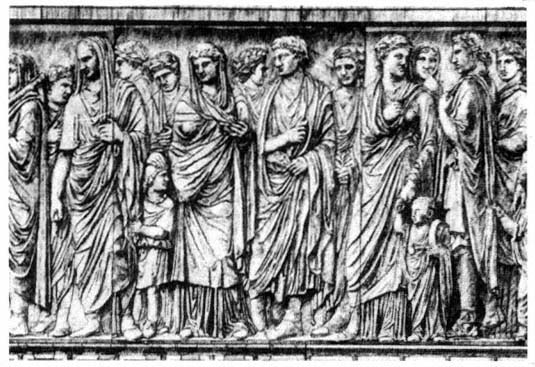 their learning, medicine and the artwork of Kos was held in high esteem by the conquering Romans. Often, when a people or tribe such as the Kohanim is conquered by another tribe like the Romans, they are not entirely wiped out, and the best people and even the arts are taken over and incorporated by the conquerors such as in this case of this unique relationship that was built between Rome and the Kohanim priesthood, that may still last to this day. The symbolic story that relays this event, is the one in which Augustus Caesar had taken the Kohanim’s chief ornament of Venus rising from the sea from the island of Kos, to Rome. In doing so, he had given the Kohen special citizen status in the Roman Empire.
their learning, medicine and the artwork of Kos was held in high esteem by the conquering Romans. Often, when a people or tribe such as the Kohanim is conquered by another tribe like the Romans, they are not entirely wiped out, and the best people and even the arts are taken over and incorporated by the conquerors such as in this case of this unique relationship that was built between Rome and the Kohanim priesthood, that may still last to this day. The symbolic story that relays this event, is the one in which Augustus Caesar had taken the Kohanim’s chief ornament of Venus rising from the sea from the island of Kos, to Rome. In doing so, he had given the Kohen special citizen status in the Roman Empire.
Both Augustus and Julius had claimed Venus as their mother and hence, the mother of the Julian family. It is said, that in order to make some amends to the Kohanim of Kos for the loss of such a valuable treasure of their island, Augustus had given them special taxation status and would forgive a considerable part of their annual tribute to Rome.
This had also occurred in the time of Emperor Claudius, who in 53 A.D. granted the Kohanim immunity from taxes. Hence, the Kohen priesthood would be the first chosen people and Tribe of the Old Covenant for Rome; who would assist them in the building the New Covenant under the new law of the New Testament, in which they would all be living stones in the building of the Temple of Solomon that would now include both Gentiles and Jews.
After the Romans had conquered the Kohens, the Jews, and destroyed all their Temples and schools, the island would eventually become a barren wasteland that was once the fertile home to the Kohens (Koans) and one of the world’s best schools of medicine. As if it returned to its original state when it was once a submerged island underneath the water before Zeus had granted his daughter’s wish of raising the small island from the Sea.
The island of Kos is now kown as Dia. Today the only visitors to the island would be a priest from Crete who performs mass on Dia (Kos) just once a year, but for the most part, the island is uninhabited except for a few protected animals.
A history and true origins of a people, that someone or some entity had wished to erase from the memories of their ancestors, their original home, and from the face of the earth. An island that has seen such great light and also such sad darkness. A tale of a lost people from the lost island who have now been found.
Where are the Kohanim Levites today?
In the New Testament, the Levites are given special status and guard by King David. In theBook of Malachi, God explains why he chose the Levites to be his priests. This would make sense since the high priests for judgment of the New Testament are the Levites, and i is said in 1 Chronicles 15:1;”AND David made him houses in the city of David, and prepared a place for the ark of God, and pitched for it a tent. 2. Then David said, None ought to carry the ark of God, but the Levites; for them hath the Lord chosen to carry the ark of God, and to minister unto him for ever.”
Levi was, according to the Book of Genesis, the third son of Jacob and Leah, and the founder of the Israelite Tribeof Levi (the levites). “And she [Leah] conceived again, and bares a son; and said, ‘now this time will my husband be joined unto me, because I have born him three sons: therefore was his name called Levi.”
When the land of Israel was apportioned among the tribes in the days of Joshua, the Tribe of Levi, being chosen as priests, did not receive land (Joshua 13:33, (14:3). However, the tribe of Levi were given cities. Six cities were given to the tribe as refuge cities for all men of Israel which were to be controlled by the Levites. Three of these cities were located on each side of the Jordan River. In addition, 42 other cities (and their respective open spaces) totaling 48 cities were given to the Tribe of Levi. (Numbers 35).
This is key to understanding what happened to the Levites. They weren’t just given land to build a home, but they were given whole cities and they just didn’t disappear, they are attached to the Catholic Church.
The Tribe of Levi from whom the Levites descend are what Saint Bede has said, “allegorically, the Levites represent those attached to the Catholic Church” in his 9th century book titled, Ezra and Nehemiah. The root in Hebrew means “to join,” to “‘ bind ” (see Lui-than “snaky-monster “). From Levi, name of the ancestral patriarch, generally interpreted “joined” or “attached to”–see Genesis 29:34, also Numbers 18:2, 4, Hebrew text.
This word, says Professor Goldziher, “is but an expanded form of Lui, a serpent,” just as nahash-than, the name applied to the Levitical brazen serpent of the temple, is of nahash, any oracular serpent, as that of Eden. The serpent Nehushtan (” snake monster”) was worshiped in the Jerusalem temple (2 Kings xviii, 4) with incense, and was traditionally said, about 726 B.C., to be the copper, or bronze, serpent-symbol made by Moses in the desert. Let us not forget that we now find in Freemasonry both Boaz and Jachin that are said to be two copper, brass or bronze pillars. Now you have a clue as to where we might find some the Levites today.
This was at the time of the New Foundation of the new church of Jerusalem, who the Tribe of Levi is the ancestral patriarch. Therefor if you are looking or one of the Tribes of Israel, you can find the Tribe of Levi working side by side with the Universal Church. In the Book of Malachi, God explains why he chose the Levites to be his priests. This would make sense since the high priests for judgment of the New Testament are the Levites .
The Book of Jubilees similarly has Isaac telling Levi of the future of his descendants, again predicting priesthood, prophets, and political power,and additionally describes Jacob as entrusting Levi with the secrets of the Gnosis, so that they would be known only to the Levites. This was the formation of the secret brotherhood of the Order of the Gnostics.
ANCIENT LEVITE PRIESTHOOD LIST:
some of the most important biblical people were Moses and his brother Aaron, who wereboth Levites. The descendants of Levi, the son of Jacob. (LEW (1).] He had three sons: Gershon or Gershom, Kohath, and Merari (Gen. xlvi. 11 ; Exod. vi. 16: Numb. iii. 17; 1 Chron. vi. 10, 43). Moses and Aaron were the grandsons of Kohath, and the great grandsons of Levi (Exod. vi. 16, 18, •JO, 2G). Gershon, Kohath, and Merari all founded families, but a certain prominence attached to the Kohathites, from whom the leaders of Israel at the critical period of the departure from Egypt had sprung (Numb. iv. 1-40);
- Moses
- Aaron
- Miriam
- Samuel
- Ezekiel
- Ezra
- Malachi
- John the Baptist
- Mark the Evangelist
- Matthew the Evangelist
- Barnabas
The descendants of Aaron, who was the first kohen gadol; high priest of Israel, who were designated as the priestly class, the kohanim. In Egypt, the Levites were the only tribe that remained committed to God. During the Exodus, the Levite tribes were particularly zealous in protecting the Mosaic law in the face of those worshipping the Golden Calf, which may have been a reason for their priestly status. As such, kohanim comprise a family dynasty (although people claiming to be kohanim have many haplogroups) within the tribe of Levi, and thus all kohanim are traditionally considered to be Levites, but not all Levites are kohanim. (Wikipedia)
The Levites had helped form the original Catholic Church and many of the first Levites had also assisted in the writing of the New Testament.
Here is a list of more Kohanim from Kos (Ceus, Cos or Coos):
Simonides of Ceos (Ancient Greek: Σιμωνίδης ὁ Κεῖος) (c. 556–468 BC) was a Greek lyric poet, born at Ioulis on Ceos. The scholars of Hellenistic Alexandriaincluded him in the canonical list of nine lyric poets, along with Bacchylides (his nephew) and Pindar (reputedly a bitter rival). Both Bacchylides and Pindar benefited from his innovative approach to lyric poetry and he was more involved than either of them in the major events and personalities of their times. His fame owes much to traditional accounts of his colourful life, as one of the wisest of men, as a greedy miser, as an inventor of a system of mnemonics and also of some letters of the Greek alphabet (ω, η, ξ, ψ).
Aristotle reported that the wife of Hieron once asked Simonides whether it was better to be wealthy or wise, to which he apparently replied: “Wealthy; for I see the wise spending their days at the doors of the wealthy.” Plato, in The Republic, numbered Simonides with Bias and Pittacus among the wise and blessed, even putting into the mouth of Socrates the words “it is not easy to disbelieve Simonides, for he is a wise man and divinely inspired,” but in his dialogue Protagoras, Plato numbered Simonides with Homer and Hesiod as precursors of the sophist.
Bacchylides (/bəˈkɪlɨˌdiːz/; Ancient Greek: Βακχυλίδης) (5th century BC) was a Greek lyric poet. Later Greeks included him in the canonical list of nine lyric poets which included his uncle Simonides. The elegance and polished style of his lyrics have been noted in Bacchylidean scholarship since at least Longinus (De Sublimitate 33,5). Some scholars, however, have characterized these qualities as superficial charm. According to Strabo, he was born in Ioulis, on the island of Ceos, and his mother was the sister of Simonides. According to Suda, his father’s name was Meidon and his grandfather, also named Bacchylides, was a famous athlete,yet according to Etymologicum Magnum his father’s name was Meidylus.
Prodicus of Ceos (Kos or Cos) (Greek: Πρόδικος, Pródikos; c. 465 BC – c. 395 BC) was a Greek philosopher, and part of the first generation of Sophists. He came to Athens as ambassador from Ceos, and became known as a speaker and a teacher. Plato treats him with greater respect than the other sophists, and in several of the Platonic dialogues Socrates appears as the friend of Prodicus. Prodicus made linguistics and ethics prominent in his curriculum. The content of one of his speeches is still known, and concerns a fable in which Heracles has to make a choice between Virtue and Vice. He also interpreted religion through the framework of naturalism.
The island of Kos (Dia) is where the Father of Medicine, Hippocrates (Greek: Ἱπποκράτης; Hippokrátēs; c. 460 BC – c. 370 BC) was born and also where he had operated his world-famous school of medicine. Soranus said that Hippocrates learned medicine from his father and grandfather, and studied other subjects with Democritus andGorgias. (Wikipedia) This learning of grandfather, father to son would follow in the ancient Kohen family tradition. Pliny had written Hippocrates learned medicine by writing down the successful cures that had been recorded by patients on the walls of Asklepios’s Kohen (Koan) temple.
To Hippocrates is accorded the honorable title of Father of Medicine, and even in those early days the “oath of Hippocrates” was a solemn obligation to be taken by all who undertook the study or practice of medicine. He wrote much in regard to dental maladies and their remedial measures, among which were considered extraction and cauterization. He was the inventor of certain crude dental forceps and other dental instruments. He practiced the extraction of loose teeth and cauterization of those that ached but were not loose. He also recognized that the first teeth are formed before birth by the nourishment of the fetus in the womb.
Drakon, the son of Hippokrates of Kos and his nephew of the same name, and the Alexandrian grammarian from Stratonikeia,
Eugenio Amato Drakon of Kos (400 — 350 BCE) GALEN, commenting on two Hippokratic treatises, mentions Drakon the son of HIPPOKRATES, and brother of THESSALoS OF KoS, and suggests that some claimed that Drakon authored them:
The comedian Epicharmus of Kos was another well-known man of medicine from Kos who was also known as someone who had a great sense of humor. Plato mentions Epicharmus in his dialogue Gorgias and in Theaetetus. In the latter, Socrates refers to Epicharmus as “the prince of Comedy”, Homer as “the prince of Tragedy”, and both as “great masters of either kind of poetry”.More references by ancient authors can be found discussed in Pickard-Cambridge‘s Dithyramb, Tragedy, Comedy and they are collected in Greek in Kassel and Austin’s new edition of the fragments in Poetae Comici Graeci, (2001).(Wikipedia)
Philitas (Philetas) of Kos (340 – c.?285 BC) was a scholar and poet during the early Hellenistic period of ancient Greece. A Greek associated with Alexandria, he flourished in the second half of the 4th century BC and was appointed tutor to the heir to the throne of Ptolemaic Egypt. His reputation continued for centuries, based on both his pioneering study of words and his verse in elegiac meter. His vocabulary Disorderly Words described the meanings of rare literary words, including those used by Homer. His poetry, notably his elegiac poem Demeter, was highly respected by later ancient poets. However, almost all his work has since been lost. He was thin and frail; Athenaeus later caricatured him as an academic so consumed by his studies that he wasted away and died. Little is known of Philitas’ life. Ancient sources refer to him as a Coan, a native or long-time inhabitant of Cos,[3] one of the Dodecanese islands in the Aegean Sea just off the coast of Asia. His student Theocritus wrote that Philetas’ father was Telephos and his mother, assuming the manuscript is supplemented correctly, Euctione.[6] From a comment about Philitas in the Suda, a 10th-century AD historical encyclopedia, it is estimated he was born in 340 BC.
During the Wars of the Diadochi that followed the death of Alexander the Great and divided Alexander’s empire, Ptolemy had captured Cos from his rival successor, Antigonus, in 310 BC; his son, Ptolemy II Philadelphus, was born there in 308 BC. It was a favorite retreat for men of letters weary of Alexandria.
Praxagoras of Kos is known in medical history as the preceptor of Herophilus, one of the leaders of the Alexandrian school of medicine, for his philosophical teachings. was an influential figure of medicine in ancient Greece. He was born on the Greek island of Kos in about 340 BC. Both his father, Nicarchus, and his grandfather were physicians. Very little is known of Praxagoras’ personal life, and none of his writings have survived.
Plistonicus of Kos was an ancient Greek physician who therefore lived in the 4th and 3rd centuries BC. Some, following Erasistratus, hold that in the belly the food is ground up; others, following Plistonicus, a pupil of Praxagoras, that it putrifies.
3rd Century Greek poet Herodas (Greek: Ἡρώδας) was also a Kohen (Koan) from the island of Kos. An account of Kos down to and during the time of Herodas is given in the book, The Mimes of Herodas by Herodas.
Ptolemy I had become defacto king of Kos during the Wars of the Diadochi that following the death of Alexander the Great and divided Alexander’s empire, Ptolemy had captured Cos from his rival successor, Antigonus, in 310 BC; It was a favorite retreat for men of letters weary of Alexandria. In the year 309BC, Ptolemy I brought Queen Berenike to Kos to give birth to the next king of Ptolemaic Egypt from 283 BCE to 246 BC, Ptolemy II Philadelphus.
Ptolemy II was a Koan or Kohen by way of his mother and had fiercely protected the island of his birth, Kos during his reign which was after the dissolution of the empire of Alexander the Great. Ptolemy II (Philadelphus,), the son of Ptolemy I was born on the island in 308 B.C.
Kos was the birthplace of Apelles, the greatest of Greek painters
Herophilus (325-255 B. C.) is one of the group that has been called the greats who taught at the Hippocrates School of Medicine on the island. Hehad subscribed to humoural theory and was also a medical assistant to Ptolemy I. He was a pupil of Praxagoras.
Kaphisophon was a Kohen doctor who had practiced in Alexandria, who led an Alexandrian theoria to Kos (220—210 BC); see Herzog.
Xenophon of Kos (about B. C. 290) lived before Apollonius of Memphis (B. C. 250), and wrote on botany, the pulse, medicines and diseases of women. He regarded the departure of worms from the body a dangerous sign in diseases. He was Claudius’ personal physician, and virtual ruler in Kos. Hence, the chosen Kohen High Priest.
Philinos of Kos (fl. 250 BCE) is usually credited with being the founder of the Empiricist school of medicine. He was a famous runner who won victories at all four of the panhellenic games in two successive Olympiads (129-130). Philinos was a pupil of Herophilus.
Erasistratus of Kos was a Greek anatomist and royal physician under Seleucus I Nicator of Syria. Along with fellow physician Herophilus, he founded a school of anatomy in Alexandria, where they carried out anatomical research. Greek anatomist and physician in Alexandria, regarded by some as the founder of physiology. Known especially for his studies of the circulatory and nervous ..
Soranus of Kos was a 1st century Kohen physician who had practiced in gynecology.
Makareus, son of Philokleidas, appears in two inscriptions from Kos: (1) as a petitioner at the Delphic oracle his name is preserved in the text of the oracular question . Makareus son of Aratos, arriving from Kos, renewed the familiar ties which exist between the Koans and the Macedonians and gave an account of the goodwill of the city
Aristokrates of Kos was the son of Makareus
Kritodemos was a Kohen physician from Kos
Hermias son of Emmenidas was a Kohen doctory from Kos. Two documents are letterdecrees by Knossos and Gortyna for Hermias who had distinguished himself for his services in a war in which both cities participated on the same side. He had worked on Crete. http://www.csad.ox.ac.uk/CSAD/Images/00/Image40.html
Eudemos was then also the name of a priest of Julius Caesar under Augustus at Kos.He was the son of Epikrates, and it is said he was known from a fragmentary Kohen.
Polyrrhenians
Nicanor of Kos wrote a commentary on this Idyll
Theocritus was a Kohen
Delphis, daughter of Philinos, is not attested, but another Delphis is known as a poetess in Kos
Mestra Pharmakis was the Thessalian Sorceress who gave birth to the Kohen king Eurypylus on Kos

Moe is the founder of GnosticWarrior.com. He is a father, husband, author, martial arts black belt, and an expert in Gnosticism, the occult, and esotericism.

